How To Automatically Map A Network Drive In Windows 7
In this guide, I'll show you stride by pace instructions on how to map network drives with Grouping Policy.
If yous're still using login scripts so it's fourth dimension to switch to Grouping Policy.
Mapping drives with grouping policy is very easy and requires no scripting feel.
Bonus: It can actually speed upwards the user logon process.
I'll show you ii examples, the commencement one is mapping a bulldoze for a department, the second volition map a drive for individual users.
In addition, I will utilize item level targeting to map drives based on specific conditions like grouping membership, OU, operating system, etc.
Logon Scripts VS Group Policy
The ability to map a network bulldoze with Group Policy was introduced in Server 2008.
Logon scripts are a thing of the past.
Logon scripts can actually wearisome computers down. Yes, group policy is faster.
Unless you have some crazy complex script that does something that Group Policy cannot exercise and so at that place is no reason not to use information technology.
Mapping Drives with Group Policy has the following advantages:
- It's much easier than logon scripts. Checkboxes and drop downwards lists, no need to understand scripting
- It's scalable, as big as your Active Directory volition grow logon scripts volition scale no problem.
- It's very flexible. With item level targeting you tin target groups, users, OUs, operating systems so on.
- It'southward easy
Now let's move on to some examples of mapping drives with group policy.
Case 1: Map a Section Network Drive Using Group Policy
In this example, I'm going to map a network drive for the HR department. I'll apply item level targeting so it just maps this drive for users in the Hr organizational unit of measurement.
You could also apply a Security Group to target a specific group of users. This will map to a network share that but the HR department has access to.
Stride one: Create & Link a new GPO
1. Open the Group Policy Management Panel
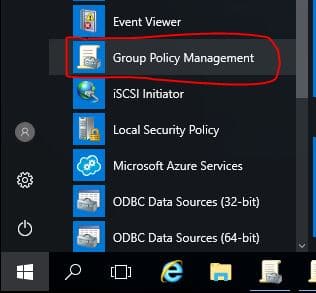
two. In the Grouping Policy Management Console, Right Click and Select "Create a GPO in this domain, and Link it here"
TIP: This will be a user based GPO and then brand sure y'all link the GPO to a location that will target the users. I have all of my users separated into an OU called ADPRO Users, I'll create and link the GPO in that location.

3. Name the new GPO
You tin name the new GPO any you lot like, I've named mine "Users – Mapped Drives
I tin later add additional drive mappings to this GPO.
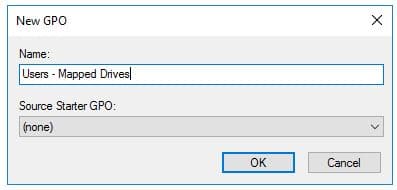
The new GPO is now created and linked, at present information technology's fourth dimension to configure the settings.
Step two: Configure GPO Settings
1. On the GPO right click and select edit
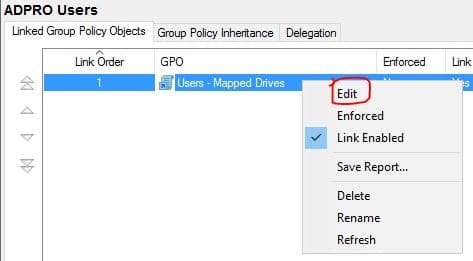
2. Navigate to User Configuration -> Preferences -> Windows Settings -> Drive Mappings
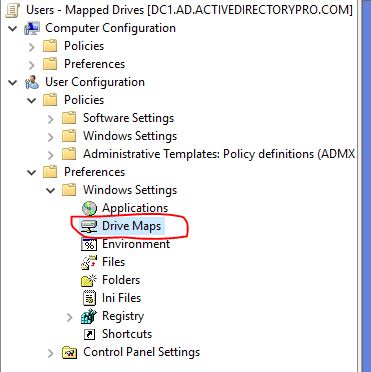
iii. Right Click Drive Mappings, Select New – > Mapped Drive
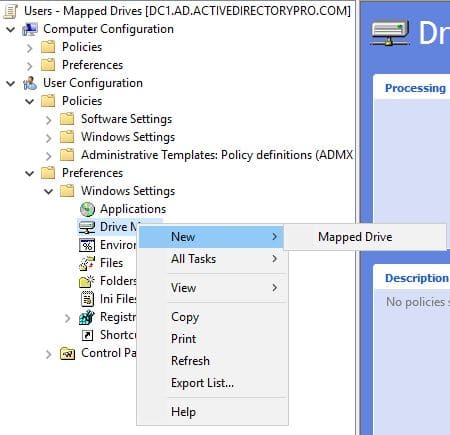
4. Configure Drive Mapping Properties
General Tab Settings
- In location put the path to the share/folder you want to map a bulldoze to.
- Select a drive letter
- Choose Update for activity
- Characterization as: This is optional but may be beneficial for users.
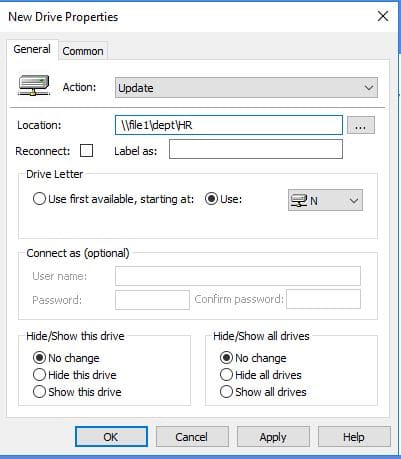
Common Tab Settings
Select "Run in logged on users's security context
Select Particular-level Targeting
Click the Targeting Push button
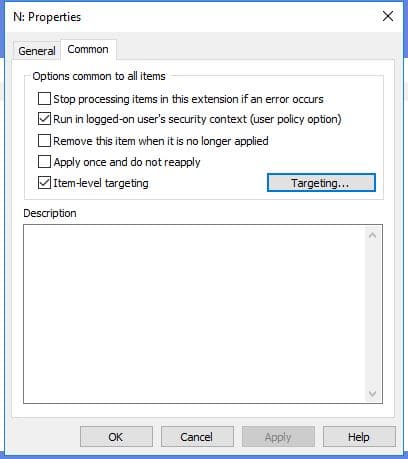
Select New Detail
Select Organization Unit then select the OU you want to target

Click OK, Click OK again to shut the new bulldoze properties
This completes the GPO settings
Step 3: Reboot Computers to Process GPO
For the GPO to run I will demand to reboot the users PC or run gpupdate /force. The side by side time a user from the Hour section logs in they should come across a mapped drive.
I've rebooted the computer, now I'll log in with an account that is in the Hour organizational unit of measurement.

One time logged I will become to file explorer and check for the mapped drive.
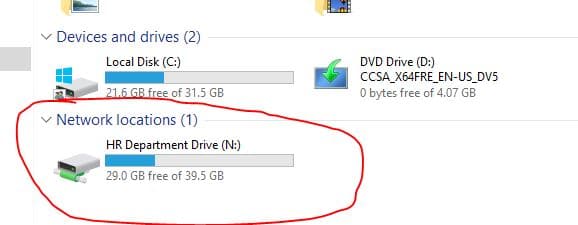
It works.
At present, whatsoever user I put in the HR folder will get this mapped drive. If y'all don't want to use an OU you tin can too target a group of users past using a Security group.
Instance two: Using Group Policy to Map a Drive for Individual Users
This example will map a drive for individual users. This volition give the users their ain personal folder to save files.
You lot can create a new GPO or add to your existing one, I accept all my drive mappings in one GPO.
This example requires a folder to be setup on a network share that matches the user'south logon name. You volition want to modify the NTFS permissions so the private user is the just one that has permissions to it.
I'll be using Mark Foster every bit an case, the logon name is mfoster then I'll demand a folder setup on a network share chosen mfoster.
I'1000 not going to repeat every step, I'm basically starting at Step 3 from the showtime example.
Step 1: Create a New Drive Mapped bulldoze
Here are the drive map settings for mapping a drive for an private user
The %UserName% is a variable that will match the user's logon name.
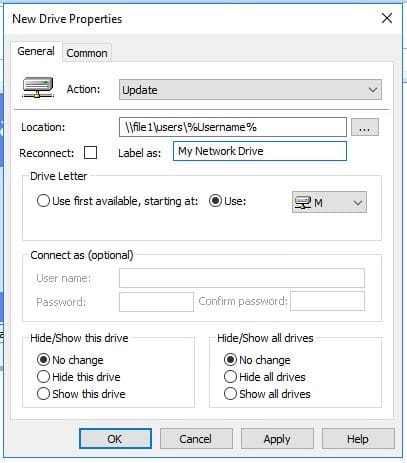
Just to be articulate you must take folders setup on a network share that matches the location and users logon name.
My file server is file1, the share is users and in the user'southward folder is a folder for each user. Screenshot below of users folder on file1 server.

That is it.
Only have the user log off and back on and it should map the 1000 drive

Perfect! Now the user is mapping a section drive and a personal drive.
Final Thoughts
As you can see mapping drives with group policy is very like shooting fish in a barrel. It doesn't require any scripting experience, it'due south simply a matter of a few clicks and select your desired settings.
If you are still using logon scripts follow the steps in this guide and replace them with Group Policy. The biggest claiming is just finding the time to switch them over.
Now it'southward time to switch over those logon scripts.
Related Posts

Group Policy Best Practices
Grouping policy can get complicated, it can exist circuitous and it can exist difficult to troubleshoot when you have multiple GPOs practical beyond the entire domain
VIEW Postal service

View NTFS Effective Permissions
NTFS effective permissions are the resultant permissions of a file or binder for a user or group. It is the combination of explicit and inherited permissions.
VIEW Mail service
Source: https://activedirectorypro.com/map-network-drives-with-group-policy/
Posted by: tietjenponjuseme64.blogspot.com

0 Response to "How To Automatically Map A Network Drive In Windows 7"
Post a Comment